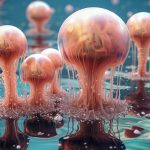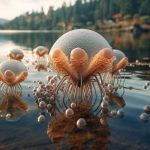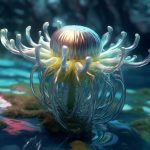Organic forms in constant growth, mutation, and decay. A speculative ecosystem existing on the fluid boundaries between simulation and reality. Created through an iterative dialogue with AI, fragments of text were transformed into strange biomorphic images and brought to life through animation. These pulsating, shifting forms seem to breathe and evolve on their own. Creatures emerging from the seeds in the latent space of the algorithm, lifeforms that could have been, or may yet be. Are these echoes of the early stages of life on Earth, a branch of reality that could have existed, or a possible future where life begins anew? As these forms shift and dissolve, blurring the artificial with the organic, they evoke both emergence and disappearance, creation and impermanence. In their constant flux, they reflect the fragile balance of existence within both the digital and biological worlds.
Lida Zaharopoulou
Lida Zaharopoulou is an interdisciplinary artist, creative coder, and data scientist from Athens, Greece. She holds a BSc in Computer Science and an MSc in Cognitive Systems and Interactive Media. She worked as a software engineer at CERN and is currently in data science while completing an MA in Digital Arts at Athens School of Fine Arts. Her work has been presented at festivals and group exhibitions including Sónar+D (Barcelona), Medialab-Prado (Madrid), FILE Festival (São Paulo) and Kunstquartier Bethanien (Berlin). Lida has presented talks on AI and Art and received awards, including first place in EthicAI=LABS with the group BlackboxAI and best artwork prize at IEEE’s CVPR AI Art Gallery. In her practice, she combines machine learning, data, creative coding, speculative research, worldbuilding, storytelling, and a mix of analogue and digital media to explore connections between reality, memory, fiction, and the social implications of AI and technological systems.






